Maritime pine (MAP)
Maritime pine has a wide natural distribution throughout the Mediterranean region, but the natural range is unclear due to extensive planting. Main uses are the stabilisation of sand dunes and as a forest species on low fertility soils. The Les Landes forest in south-west France covers 900,000 ha and is the world’s largest man-made forest. In Britain past plantings in the south of England have grown well but it has not been widely planted. There is growing interest in maritime pine for forest diversification particularly where Corsican pine is the dominant species.
This is a species which could play a larger role in forests in southern Britain and coastal regions with climate warming if improved varieties were used.
Maritime pine is categorised as a Secondary tree species. These are species that have demonstrated positive silvicultural characteristics in trial plots but gaps in knowledge constrain wider use. The species are being actively evaluated to increase understanding and inform future deployment.
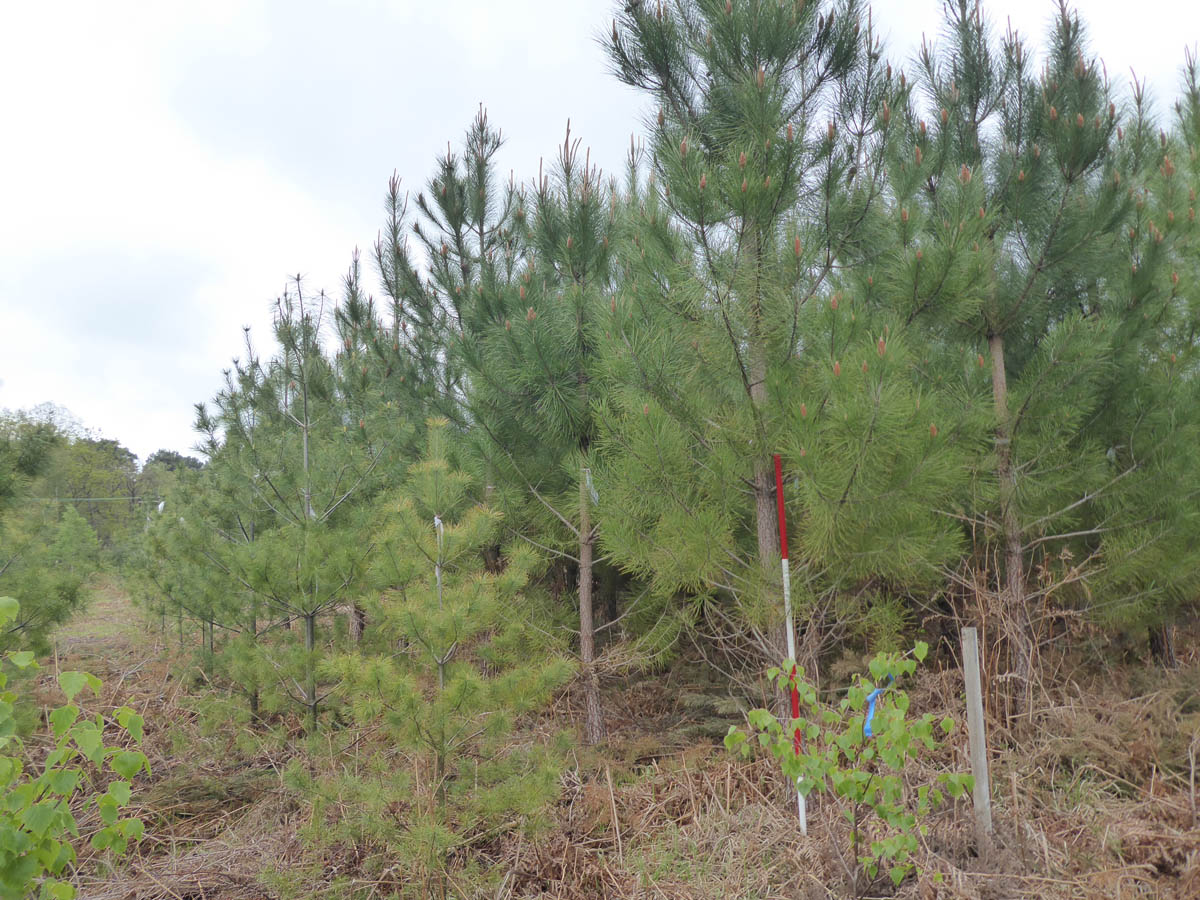
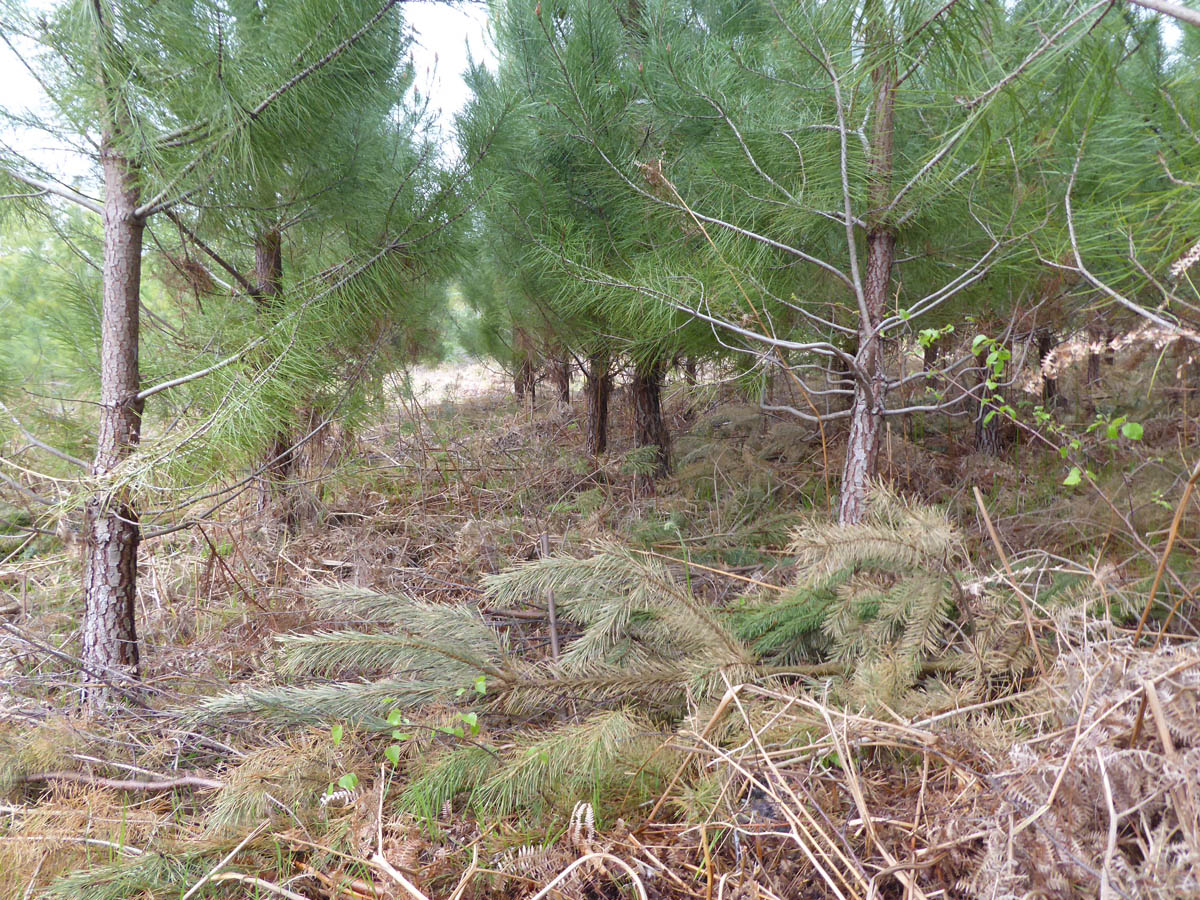
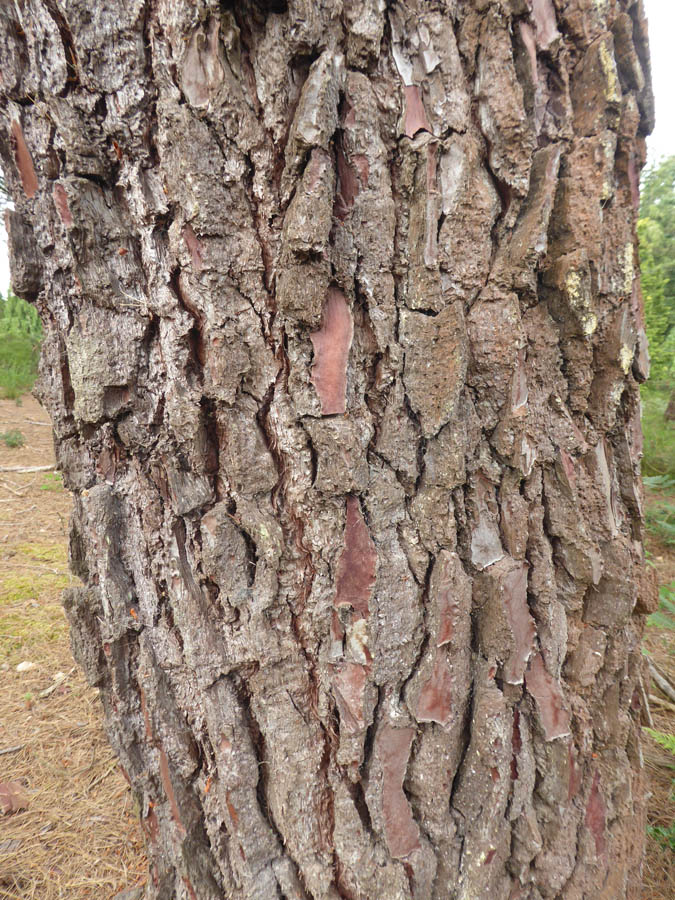
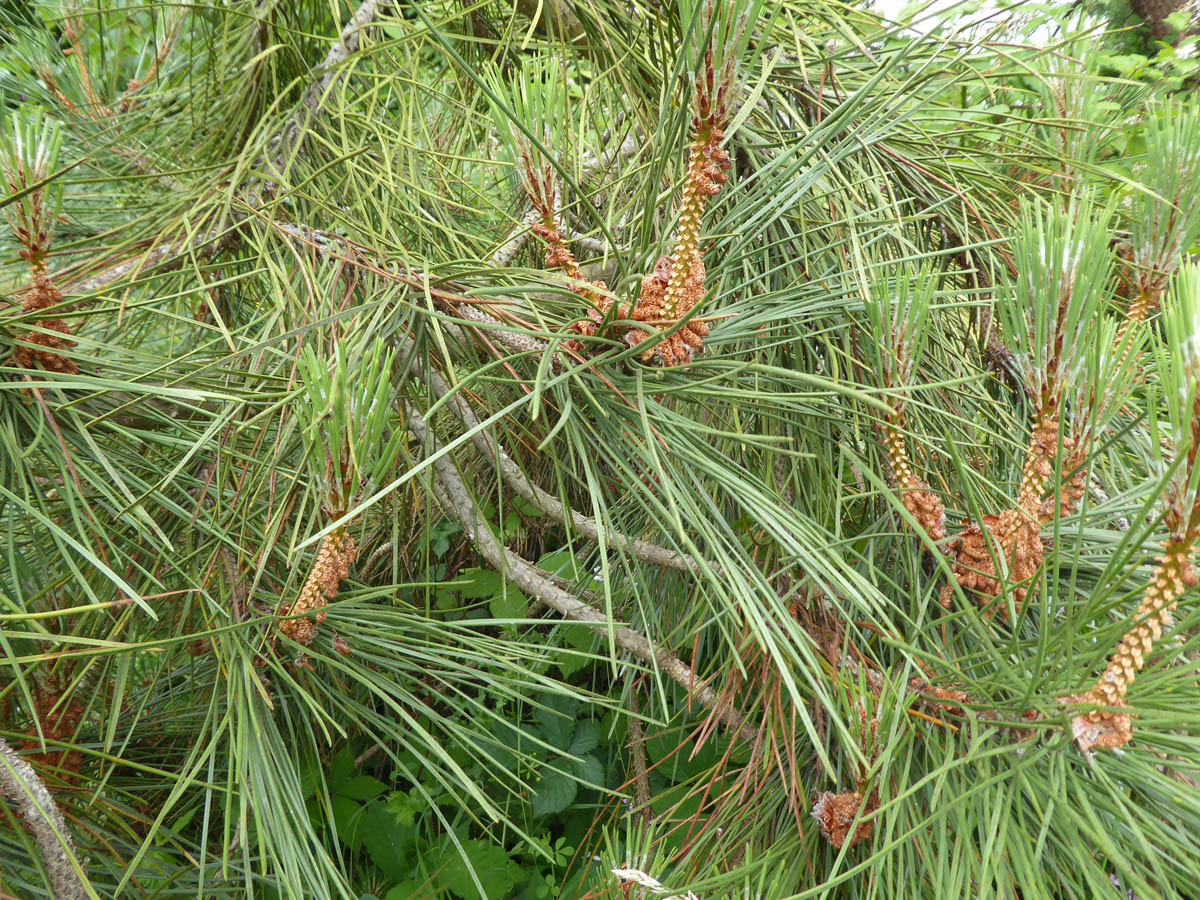
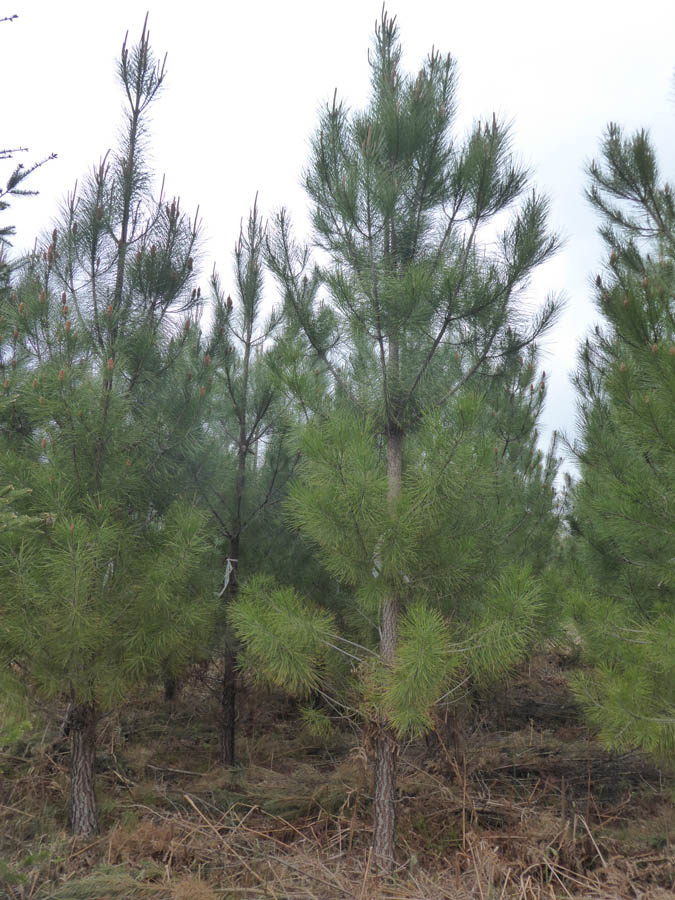
Range
Maritime pine is native to the central and west coastal region and islands of the Mediterranean and the Atlas Mountains of North West Africa. There are two recognised forms with Pinus pinaster subsp. atlantica generally occurring on sites to 600 m in Portugal, north-western Spain (Galicia) and southwestern France (the Landes), which has been planted in Britain, and Pinus pinaster subsp. pinaster growing to 2000 m in the warmer regions of inland Spain, Morocco and the Mediterranean basin.
Provenance Choice
Maritime pine shows a high degree of genetic variation over its natural range. Visual evidence suggests variations in growth, stem form, branching habit and frost tenderness, but there is little confirmed information directly linking this to provenance.
Very limited provenance testing has been carried out in Britain; preferred seed sources should be from the Landes region of France ideally using improved material from French breeding programmes.
Key Properties
Site Requirements
Although planted in Britain since the 1600s, sensitivity to cold and exposure restricted its use to southern and coastal regions. A light demanding pioneer adapted to acid, poor or medium fertility soils and of moderately dry to moist soil moisture status. It does not tolerate peat or wet gley soils and is not suited to alkaline sites.
Maritime pine generally occurs naturally in warm temperate regions with a maritime influence on climate, mainly in humid and sub-humid areas, where annual rainfall is greater than 600 mm. Seems not to withstand temperatures below -18 °C and is only moderately tolerant of exposure.
Further detail on the site requirements of maritime pine in current and future climates can be examined using the Forest Research Ecological Site Classification Decision Support System (ESC).
ECOLOGICAL SITE CLASSIFICATION TOOL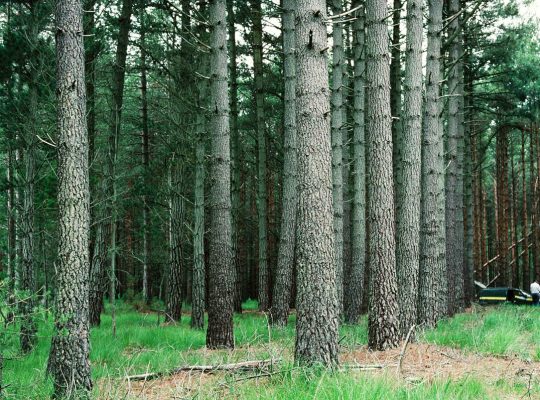
Silviculture
Maritime pine is a light demanding, pioneer species that frequently grows in pure stands. In Britain it is only suitable on sites in the south. Maritime pine can be established by direct sowing, though nursery-grown, one-year-old seedlings are the norm. Seedlings tend to grow a strong tap root and rather week lateral roots which can lead to instability in young trees. The result is leaning trees with swept stems a characteristic of this species. Cultivation can assist root growth and an application of NPK fertiliser can help with stability.
As a light demander thinning must be done early and heavily, and the crowns of individual trees should be kept clear of each other at all stages of their development. Heavy branching can be an issue and pruning – over the autumn and winter – is a standard technique where a high-quality log is required. The usual silvicultural system is clear felling of various forms. There is little experience of growing the species in mixed stands and its strong light demanding nature does not generally suit continuous cover.
Maritime pine is a serious invasive in parts of South Africa and many other places. It will also regenerate after fires, which cause the cones to open and release seed.
Pests and Pathogens
Maritime pine is moderately susceptible to Dothistroma septosporum (red band needle blight) and is likely to be affected by Heterobasidion annosum (conifer root and butt rot), especially on drier sites with mineral soils. Infection by Bursaphelenchus xylophilus (pine wood nematode), which is established in Portugal, can also result in high mortality rates for species such as maritime pine. In fact, planting of the species in Portugal has been much reduced because of the nematode.
See our other tools and resources
Further Resources
External
In addition to the general sources of information for species the following are useful for maritime pine.
Bladon, F. and Evans, J. (2015) Alternative species in situ: A study by the Wessex Silvicultural Group. Quarterly Journal of Forestry 109(2): 117-121
Reynolds, C et al. (2021) Providing the evidence base to diversify Britain’s forests: initial results from a new generation of species trials. Quarterly Journal of Forestry 115: 26-37.
Savill, P. (2015) Pinus pinaster Aiton (maritime pine) Silviculture and properties. Quarterly Journal of Forestry 109(1): 29-32




